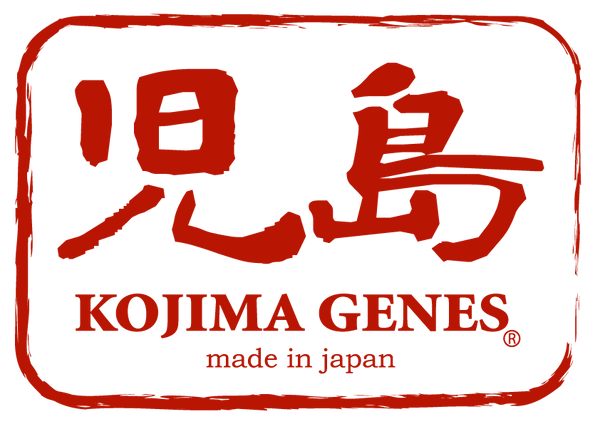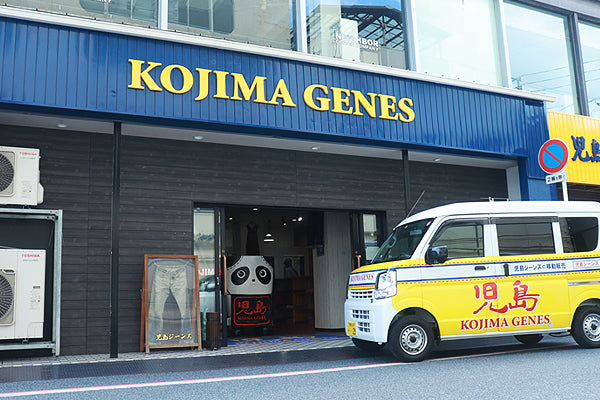What Is Okayama Denim?
Okayama Denim refers to the world-class selvedge denim produced in Kojima, a district of Kurashiki in Japan’s Okayama Prefecture. Woven slowly on vintage shuttle looms, these narrow, tightly woven fabrics boast unparalleled strength and subtle slub texture.
Expert craftsmen dye the yarns using the traditional rope-dyeing method—immersing cotton yarns in indigo baths and exposing them to air repeatedly—so the core remains white while only the surface picks up color. Over time, natural wear reveals striking fades and contrasts that make every pair uniquely yours.

The History of Denim in Kojima
Denim arrived in postwar Japan when G.I.s stationed here sported Levi’s jeans, symbolizing freedom and rebellion to local youth. Importers like Oishi Trading (predecessor to Big John) began bringing in American denim, but Japanese manufacturers soon set out to make their own. In the 1960s, and in 1973 Big John released the M-series—the nation’s first fully homegrown jeans. The late ’70s and ’80s saw the rise of the “Osaka Five” (Studio D’Artisan, Denime, Evisu, Full Count, Warehouse), whose vintage-inspired designs and obsessive craftsmanship put Okayama on the global denim map. Today, Kojima is known as “Denim Heaven,” where heritage and innovation intertwine.

Top Mills & Brands of Okayama Denim
Big John
As Japan’s pioneering jeansmaker, Big John’s M-series laid the foundation for domestic denim production and remains a benchmark for quality.
Momotaro Jeans
Famous for its “going to battle” stripes and pink-edged selvedge, Momotaro uses premium Zimbabwe cotton and ocean-washed indigo to achieve its signature deep blue.
Evisu
The hand-painted seagull logo sparked the ’90s replica craze, making Evisu synonymous with the Kojima denim renaissance.
Iron Heart
Built for bikers, Iron Heart’s ultra-heavy 21-ounce denim performs like armor yet feels surprisingly supple once broken in.
Pure Blue Japan
Renowned for its intense slub yarns, PBJ’s uneven texture yields one-of-a-kind fades you won’t find elsewhere.
Edwin
A pioneer in stone-wash treatments, Edwin offers everything from accessible entry-level models to top-tier Japanese-made lines, making it a versatile choice for newcomers and enthusiasts alike.
Denim Kuroki
Among Kojima’s legendary fabric mills, Denim Kuroki stands out for its century-old expertise in shuttle-loom weaving. Since 1922, they have combined traditional techniques with modern research to produce selvedge denim renowned for its remarkable durability and balanced hand feel. Many top brands source their raw fabrics from Kuroki, whose English-language site offers an in-depth look at their process and heritage:
How to Choose Your Perfect Pair
First, decide between Raw Denim (unwashed, for a personalized fade) and One-Wash (pre-shrunk, ready to wear). Raw denim offers unmatched “live-in” character but can shrink significantly on first wash—consider sizing up. One-Wash alleviates that concern for an easier fit. Next, check if it’s Sanforized (pre-shrunk to limit post-wash shrinkage to 1–3%) or Unsanforized, which shrinks up to 10% on first launder and is best for seasoned enthusiasts. Denim weight, measured in ounces, matters too: 12–16 oz is ideal year-round comfort, 17–20 oz delivers dramatic fades, and anything over 21 oz is a heavyweight’s playground. Finally, measure your favorite non-stretch pants flat—waist, rise, thigh, inseam, hem—and compare to the brand’s size chart for the best online fit.

Where to Buy & How to Avoid Fakes
The safest route is an official brand or mill website. Many Okayama labels ship worldwide, but remember to estimate duties (typically 10–20% of value). If you’re traveling to Japan, Kojima’s denim shops and outlet stores around Kojima Station welcome visitors for fitting and fabric tours. To sidestep counterfeits, inspect the selvedge ID color, loom density, leather patch embossing, country-of-origin tag, and price consistency across authorized retailers.
Caring for Your Okayama Denim
Contrary to legend, you don’t have to wait years to wash your jeans—cleanliness prevents premature wear. Aim to hand-wash every 3–6 months or when stains appear. Turn your jeans inside out, soak in cold water with a mild detergent, gently press (don’t agitate), then air-dry in the shade to minimize distortion. As you wear them, you’ll see signature hige (whisker fades at the crotch), hachinosu (honeycomb knee fades), atari (pocket and belt-loop highlights), and roping (twisted chain-stitch hems). For long-term maintenance, monitor rivets and buttons, and enlist a denim repair service for early darning to keep your jeans strong for years.

FAQ
Q: Is every product labeled “Okayama Denim” genuine selvedge?
A: Generally yes, but styles vary by mill and loom. Always check product details and selvedge ID color.
Q: How much are import duties?
A: Duties on apparel often run 10–20% of the declared value—factor that into your budget.
Q: Can I try jeans on in Kojima shops?
A: Most stores welcome fittings. Check business hours online and arrive mid-week to avoid festival crowds.


